By 2024, the number of crypto users worldwide is expected to reach 750 million, nearing the 1 billion mark. This rapid growth highlights the increasing need for robust security features in decentralized finance ecosystems. As more individuals and institutions adopt digital assets, the demand for reliable storage solutions becomes critical.
This article explores the evolving landscape of wallets, analyzing over 25 options across 20 security criteria. From emerging technologies like MPC cryptography to air-gapped solutions, the focus is on safeguarding assets in 2025 and beyond. Innovations such as Shamir’s secret sharing and biometric authentication are reshaping how users protect their investments.
Whether you’re a long-term holder or a tech enthusiast, understanding the differences between non-custodial and custodial storage models is essential. Stay informed about the latest secure cryptocurrency wallets and industry trends to ensure your assets remain protected.
Key Takeaways
- Crypto adoption is growing rapidly, with 750 million users expected by 2024.
- Security is a top priority in decentralized finance ecosystems.
- Emerging technologies like MPC cryptography are enhancing wallet safety.
- Non-custodial and custodial storage models offer different levels of control.
- Biometric authentication and Web3 firewalls are key trends for 2025.
Introduction to DeFi Wallets and Their Importance
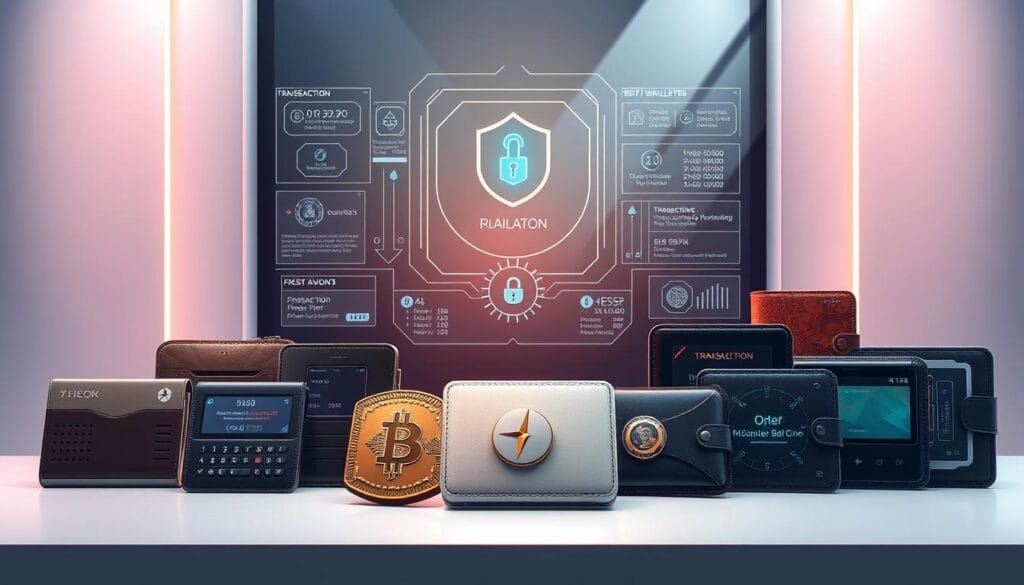
As the crypto landscape expands, understanding decentralized asset management tools becomes essential. These tools, often referred to as DeFi wallets, empower users to manage their digital assets directly on the blockchain without relying on centralized intermediaries1.
What Are DeFi Wallets?
DeFi wallets are digital tools designed to store, validate transactions, and interact with decentralized applications (dApps). Unlike traditional wallets, they leverage blockchain technology to provide users with full control over their crypto assets1.
These wallets enable functionalities like staking, token swaps, and NFT management. By maintaining control of private keys, users ensure their assets remain secure and accessible1.
Why Security is Crucial in DeFi Wallets
With over $2 billion reported stolen from crypto hacks in 2024, the importance of robust security in decentralized systems cannot be overstated2. Attack vectors like phishing, SIM swaps, and malware pose significant risks to users.
Proper management of private keys and the use of advanced security features, such as biometric authentication, are critical to safeguarding assets. As the regulatory landscape evolves, staying informed about compliance and emerging standards like ERC-4337 is equally vital3.
How to Choose the Best DeFi Wallet for Security
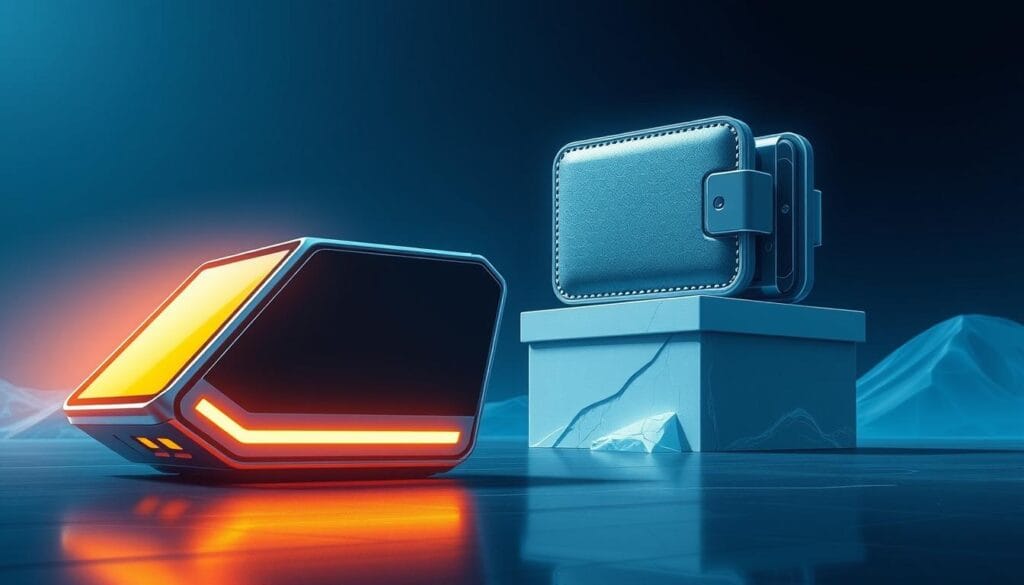
With the rise of blockchain technology, choosing a reliable storage method is more critical than ever. The right solution ensures your digital assets remain secure while offering the flexibility needed for daily transactions.
Key Features to Look For
When evaluating storage options, prioritize security features like multi-signature support and biometric verification. These protocols add layers of protection against unauthorized access.
Network compatibility is another crucial factor. Ensure the solution supports both EVM and non-EVM chains for broader usability. Recovery options, such as seed phrases or social recovery, also play a vital role in safeguarding your assets.
Hot Wallets vs. Cold Wallets
Hot wallets are ideal for frequent transactions due to their online accessibility. However, they are more vulnerable to cyber threats compared to cold wallets, which store assets offline for enhanced security.
Hardware wallets, a type of cold storage, offer robust protection by keeping private keys offline. For users managing large amounts of digital assets, this offline storage method significantly reduces the risk of theft.
Best DeFi Wallets for Security in 2025

In 2025, the digital asset landscape continues to evolve, emphasizing the need for advanced storage solutions. As threats grow more sophisticated, selecting the right tools to protect your investments becomes paramount.
Our research methodology included 72 hours of in-depth analysis and expert consultations. We evaluated over 20 options across multiple categories, focusing on mobile-first solutions and hardware specialists.
Overview of Top Picks
Ledger Nano S Plus stands out with its certification by the French ANSSI, ensuring compliance with stringent security standards. Its robust design and offline storage capabilities make it a top choice for safeguarding digital assets.
Trezor leverages open-source firmware, allowing for community audits and transparency. This approach builds trust among users, as vulnerabilities can be identified and addressed quickly.
Zengo introduces MPC (Multi-Party Computation) technology, eliminating the need for traditional seed phrases. Since its launch in 2024, it has maintained a zero-hack record, showcasing its advanced security framework.
Emerging trends like MPC are reshaping the security paradigm, offering alternatives to conventional methods. Price-performance analysis reveals that these solutions cater to diverse market segments, ensuring accessibility for all users.
Geographic availability and regulatory restrictions also play a role in selecting the right tool. Interoperability with major DeFi protocols ensures seamless integration, while insurance options and asset recovery guarantees provide additional peace of mind.
Developer activity and update frequency metrics highlight the commitment to continuous improvement. Community trust metrics, such as app store ratings and red team tests, further validate the reliability of these solutions.
Finally, the environmental impact of hardware production is an important consideration. As the industry grows, sustainable practices will become increasingly vital for long-term success.
Coinbase Wallet: Best for Beginners
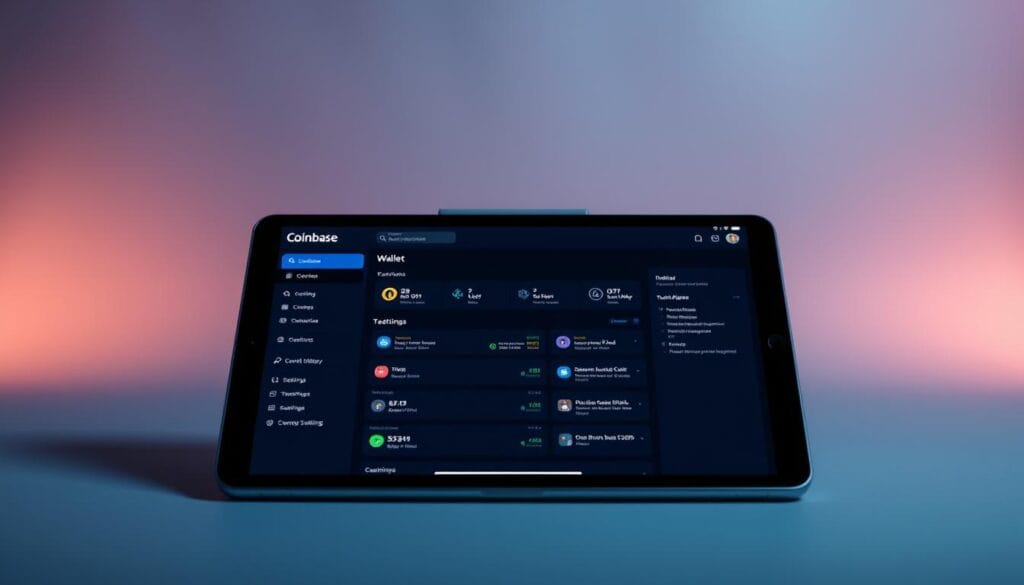
Navigating the world of digital assets can be overwhelming for newcomers, but Coinbase Wallet simplifies the process. Designed with beginners in mind, it offers a seamless experience for managing crypto assets while prioritizing ease of use.
Pros
Coinbase Wallet excels in providing a straightforward onboarding process. Its integration with fiat ramps allows users to purchase digital assets directly within the interface. This feature eliminates the need for third-party platforms, making it ideal for first-time users.
Another advantage is its multi-chain support, which includes Bitcoin and ERC-20 tokens. This flexibility ensures that users can manage a wide range of assets in one place. Additionally, the wallet offers decentralized exchange access, enabling seamless token swaps without leaving the app.
Cons
Despite its strengths, Coinbase Wallet has some limitations. Cloud backup options, while convenient, pose potential risks compared to local storage alternatives. Users must weigh the trade-off between accessibility and security.
Regulatory scrutiny of its parent company also raises concerns. While the wallet itself operates independently, its association with Coinbase may impact user trust in certain regions.
Key Features
Coinbase Wallet incorporates advanced security features to protect user assets. Biometric authentication via Secure Enclave ensures that only authorized individuals can access the wallet. This adds an extra layer of protection against unauthorized access.
For added convenience, the wallet offers a Chrome extension, allowing users to manage their assets directly from their browser. Educational resources and risk disclosures are also available, helping beginners make informed decisions.
Recent upgrades in 2024-2025 have further enhanced its safety protocols. These include gas fee optimization tools and improved smart contract interaction mechanisms, ensuring a secure and efficient experience for all users.
MetaMask: Best for Ethereum
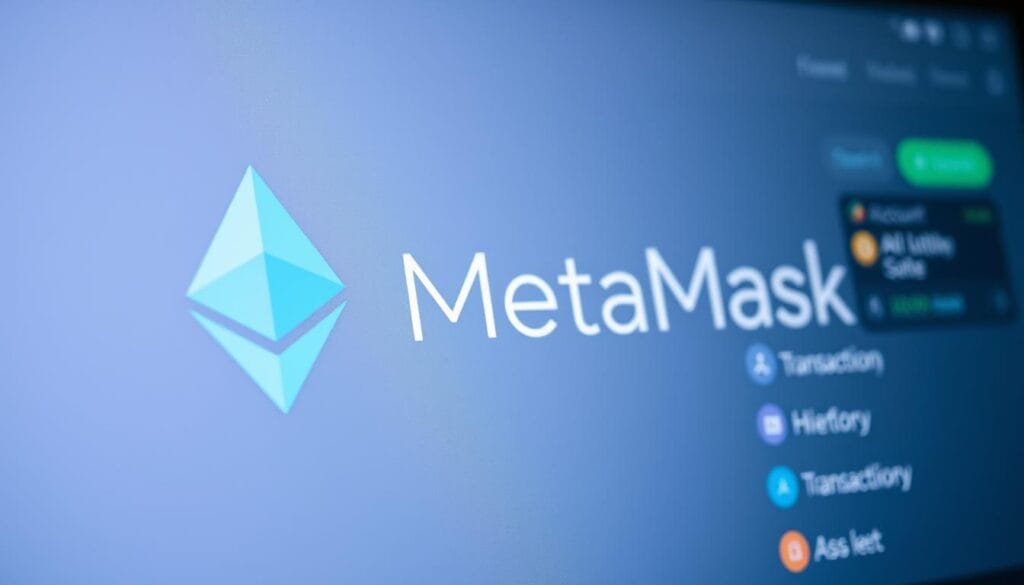
MetaMask has become a cornerstone for Ethereum users, offering unparalleled flexibility and control over digital assets. With over 30 million monthly active users, it stands as a leading solution for Ethereum-based interactions.
Pros
MetaMask’s open-source code allows for community audits, ensuring transparency and trust. Its integration with NFT marketplaces and Layer 2 solutions enhances its usability for diverse transactions.
The wallet supports EVM chains and offers hardware compatibility, providing users with robust options for safeguarding their assets. Its Snaps plugin architecture adds flexibility, enabling custom functionalities.
Cons
Despite its strengths, MetaMask faces challenges like phishing attacks. Users must remain vigilant and utilize built-in prevention tools to mitigate risks.
Custom RPC configurations, while useful, can introduce vulnerabilities if not managed properly. This highlights the need for careful setup and monitoring.
Key Features
MetaMask’s gas estimation algorithms ensure accurate fee calculations, optimizing transactions on the Ethereum blockchain. Its token approval revoke functionality adds an extra layer of security.
The wallet’s ENS integration simplifies domain management, making it easier for users to interact with decentralized applications. Institutional versions with compliance features cater to professional users, broadening its appeal.
Trust Wallet: Best for Mobile
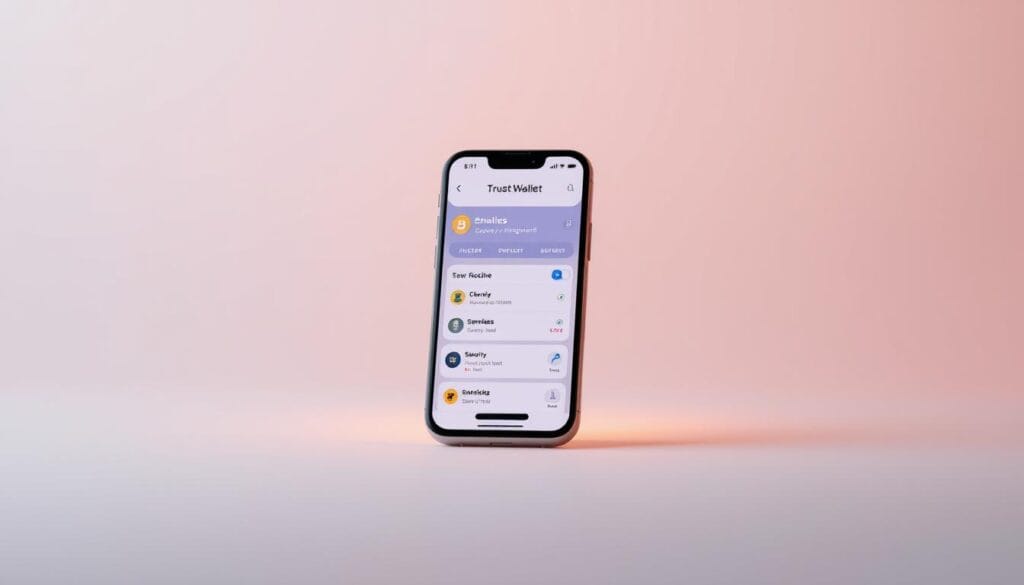
Trust Wallet has emerged as a leading mobile solution for managing digital assets, offering a seamless experience for users. Its intuitive design and robust features make it a popular choice for those seeking a reliable wallet on the go.
Pros
One of Trust Wallet’s standout features is its built-in Web3 browser, which allows users to interact with decentralized applications directly from the app. This eliminates the need for external browsers, streamlining the user experience.
Another advantage is its support for over 10 million assets, including crypto tokens and NFTs. This extensive compatibility ensures users can manage a diverse portfolio in one place. Additionally, cross-platform sync capabilities enable seamless transitions between devices.
Cons
Despite its strengths, Trust Wallet faces challenges related to Binance’s regulatory scrutiny. While the wallet operates independently, its association with Binance may raise concerns for some users.
Another limitation is the reliance on cloud backups, which, while convenient, may pose security risks compared to local storage options. Users must weigh the trade-offs between accessibility and safety.
Key Features
Trust Wallet incorporates advanced security features to protect user assets. Biometric authentication ensures only authorized individuals can access the wallet, while app sandboxing adds an extra layer of protection.
Staking rewards auto-compounding and multi-account management features enhance its functionality. The wallet also supports WalletConnect, enabling secure connections with decentralized applications.
For those exploring the BNB Chain ecosystem, Trust Wallet offers significant advantages. Its seamless integration with the ecosystem ensures users can leverage its full potential.
For more insights into decentralized platforms, explore our guide on decentralized lending benefits and top platforms.
Electrum: Best Desktop Bitcoin Wallet

Electrum has established itself as a reliable desktop solution for Bitcoin users. Known for its lightweight design and advanced security features, it caters to both beginners and experienced users. Its focus on Bitcoin ensures a streamlined experience for managing transactions securely.
Pros
One of Electrum’s standout features is its use of SPV (Simplified Payment Verification) technology. This allows the software to operate as a lightweight client, reducing resource usage while maintaining robust security.
Hierarchical Deterministic (HD) accounts simplify key management, ensuring users can generate new addresses without compromising security. Additionally, hardware wallet integrations provide an extra layer of protection for offline storage.
Cons
Electrum’s Bitcoin-only focus may limit its appeal to users managing multiple cryptocurrencies. While this specialization enhances security, it reduces versatility for those with diverse portfolios.
Another limitation is its reliance on third-party servers for transaction verification. Although this speeds up the process, it introduces potential vulnerabilities if these servers are compromised.
Key Features
Electrum offers advanced tools like transaction labeling and accounting, making it easier to track transactions. Coin control features allow users to manage UTXOs (Unspent Transaction Outputs) effectively, optimizing their Bitcoin usage.
Replace-by-fee functionality ensures users can adjust transaction fees after broadcasting, while watch-only wallet configurations enable monitoring without exposing private keys. Plugin architecture allows for custom extensions, enhancing its adaptability.
Support for legacy address formats and Tor network integration further expand its usability. Lightning Network compatibility ensures users can leverage faster and cheaper blockchain transactions.
For those exploring Bitcoin investments, Electrum provides a secure and efficient platform. Learn more about top cryptocurrencies to invest in 2025 for a broader perspective on digital assets.
BlueWallet: Best Mobile Bitcoin Wallet
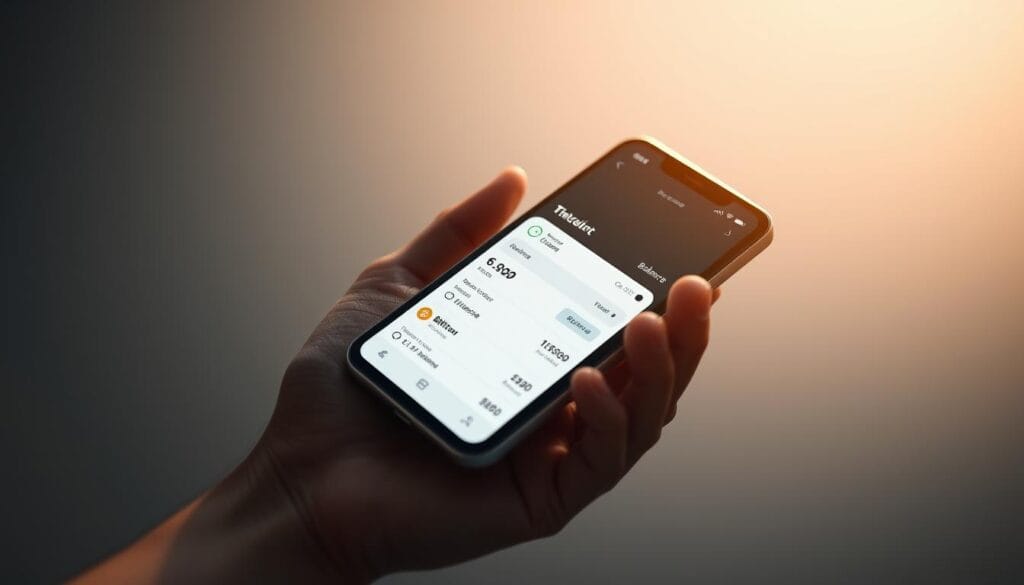
BlueWallet offers a seamless mobile experience for Bitcoin enthusiasts. Designed for ease of use, this mobile wallet combines simplicity with advanced features, making it a top choice for managing crypto assets on the go.
One of its standout features is Lightning Network integration, enabling faster and cheaper transactions. This makes it ideal for users who prioritize efficiency in their Bitcoin operations.
BlueWallet also includes a plausible deniability feature, adding an extra layer of privacy. This ensures users can protect their assets even in challenging scenarios.
Pros
BlueWallet’s batch transaction support allows users to process multiple payments simultaneously. This feature is particularly useful for businesses or individuals managing high-volume transactions.
The wallet’s PSBT workflow ensures seamless integration with hardware wallets, enhancing security. Multisig vault configurations provide additional control over funds, making it a versatile choice for advanced users.
Cons
While BlueWallet excels in Bitcoin management, it lacks support for other cryptocurrencies. This limits its appeal to users with diverse portfolios.
Another limitation is its reliance on third-party servers for certain functionalities. Although convenient, this introduces potential vulnerabilities.
Key Features
BlueWallet incorporates advanced tools like Coinjoin and Payjoin protocols, enhancing privacy for users. These features ensure that transactions remain confidential and secure.
Fee bumping capabilities allow users to adjust transaction fees after broadcasting, optimizing costs. Disaster recovery planning tools and address validation checks further safeguard assets.
For added security, the app supports Orbot integration for Tor routing and watchtower services for Lightning Network channels. These features ensure users can manage their Bitcoin with confidence.
To learn more about enhancing transaction security, explore our guide on blockchain technology.
Exodus: Best for Desktop
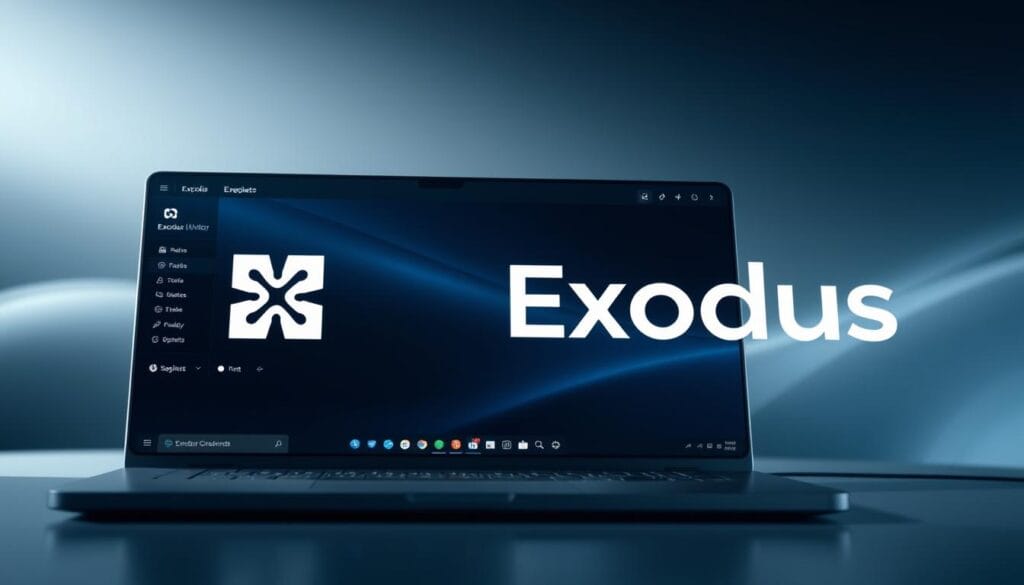
Exodus has become a trusted desktop solution for managing digital assets. Its intuitive interface and robust features make it a popular choice for users seeking a reliable wallet experience.
With support for over 280 native coins, Exodus ensures users can manage a diverse portfolio in one place. Its integration with Trezor hardware adds an extra layer of protection for offline storage.
Pros
Exodus excels in portfolio tracking and tax reporting, simplifying asset management. Live market data integrations provide real-time insights, helping users make informed decisions.
Staking validator selection options allow users to earn rewards directly within the software. The wallet’s ShapeShift integration enables seamless token swaps without leaving the platform.
Cons
Exchange API key risks are a concern, as they can expose users to potential vulnerabilities. Custom network fee algorithms, while useful, may not always optimize costs effectively.
Wallet migration procedures can be complex for beginners. Users must follow desktop security best practices to mitigate risks associated with local storage.
Key Features
Exodus incorporates advanced security features, including backup encryption methodologies. Smart contract interaction audits ensure users can engage with decentralized applications safely.
The wallet’s 24/7 customer support provides assistance whenever needed. Its compatibility with the blockchain ecosystem ensures seamless integration with various protocols.
Crypto.com: Best DeFi Wallet
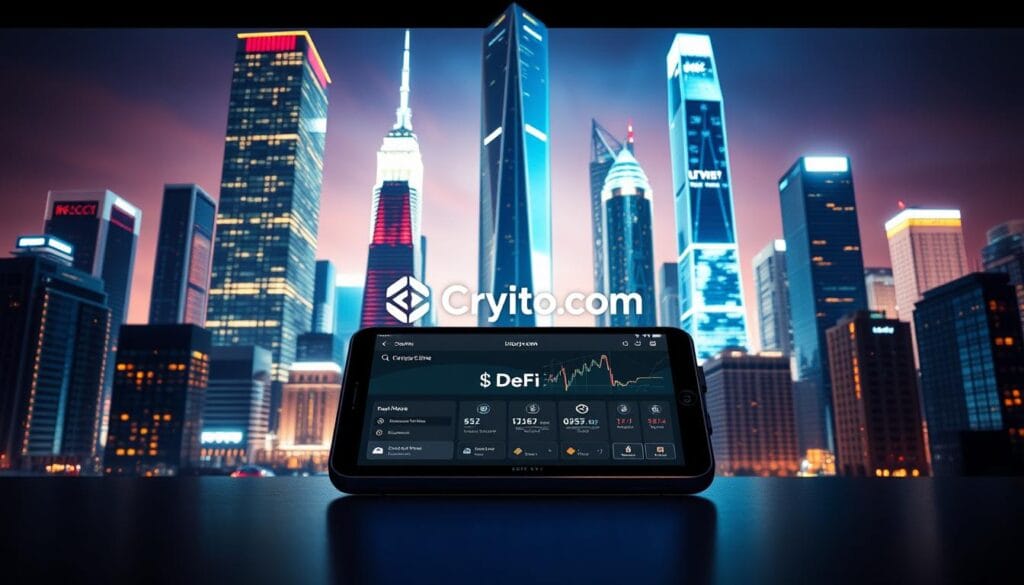
Crypto.com stands out as a versatile solution for managing digital assets across multiple chains. With support for over 400 coins, it caters to users with diverse portfolios, ensuring flexibility and accessibility.
Its integration with WalletConnect enables seamless interaction with decentralized applications, enhancing usability. Biometric authentication adds an extra layer of security, ensuring only authorized users can access the wallet.
Pros
Crypto.com’s CeFi/DeFi bridge functionality allows users to transition between centralized and decentralized systems effortlessly. This feature is particularly beneficial for those exploring both ecosystems.
The Cronos chain ecosystem offers unique benefits, including faster transactions and lower fees. Users can also earn staking rewards through the Crypto.org chain, making it a lucrative option for long-term holders.
Non-custodial swap fee structures provide transparency, while cross-chain bridge security audits ensure robust protection against vulnerabilities.
Cons
Despite its strengths, Crypto.com faces challenges related to regulatory compliance. Users must stay informed about regional restrictions to avoid potential issues.
Another limitation is the complexity of inheritance planning features. While useful, they may require additional setup and understanding.
Key Features
Crypto.com excels in NFT display and management, allowing users to showcase their collections directly within the wallet. DeFi portfolio analytics provide insights into asset performance, helping users make informed decisions.
Smart contract interaction logs ensure transparency, while inheritance planning features offer peace of mind for long-term asset management.
For those exploring the blockchain ecosystem, Crypto.com’s seamless integration with major protocols ensures a smooth and secure experience.
Zengo: Best MPC Wallet
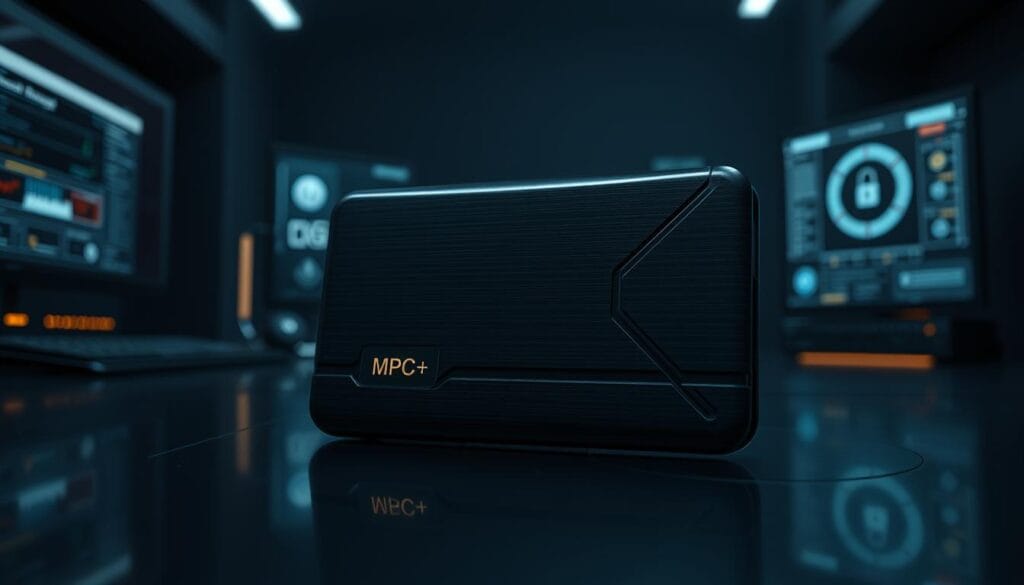
Zengo introduces a groundbreaking approach to securing digital assets with its MPC technology. By leveraging Multi-Party Computation (MPC) cryptography, Zengo eliminates the need for traditional seed phrases, offering a more secure and user-friendly experience.
Pros
One of Zengo’s standout features is its threshold signature scheme, which distributes private keys across multiple parties. This ensures that no single entity has full access, significantly reducing the risk of theft.
The wallet also incorporates a 3-factor recovery system, combining biometric authentication, social recovery, and Web3 firewall protection. This multi-layered approach provides robust security for users’ crypto assets.
Cons
While Zengo’s MPC technology is innovative, it may require a learning curve for users accustomed to traditional wallets. Additionally, its reliance on advanced cryptography could pose compatibility issues with older devices.
Key Features
Zengo supports NFT display and transfer capabilities, making it a versatile choice for digital collectors. Its institutional-grade security features ensure compliance with industry standards, while cross-device sync functionality enhances accessibility.
Transaction simulation tools allow users to preview outcomes before execution, reducing errors. Address whitelisting controls and wallet inheritance planning further safeguard assets, making Zengo a comprehensive solution for modern crypto management.
Ledger Nano S Plus: Best Hardware Crypto Wallet

Ledger Nano S Plus is a standout choice for those prioritizing robust asset protection. With its Secure Element chip certified to CC EAL6+ standards, it ensures top-tier security features for managing crypto assets. This hardware wallet supports over 5,500 assets, making it a versatile solution for diverse portfolios.
Pros
The integration with the Ledger Live app simplifies asset management, enabling users to stake and monitor their holdings seamlessly. Its non-custodial nature ensures full control over private keys, enhancing security.
Bluetooth and USB connectivity options provide flexibility, while firmware updates are rigorously verified to prevent vulnerabilities. The device’s tamper-evident design and supply chain security measures further safeguard against physical and digital threats.
Cons
While Bluetooth offers convenience, it introduces potential risks compared to USB connections. Additionally, the passphrase implementation may require a learning curve for beginners.
Enterprise management solutions and third-party app integrations are robust but may not cater to all user needs. Battery life and durability tests are impressive, though occasional maintenance is required.
Key Features
Ledger Nano S Plus excels in disaster recovery protocols, ensuring users can restore access securely. Its transactions are optimized for speed and efficiency, making it ideal for active traders.
For those new to blockchain, Ledger’s integration with blockchain technology provides a comprehensive learning experience. Explore more about its capabilities on the official Ledger website.
Trezor Safe 3: Best Open-Source Hardware Wallet
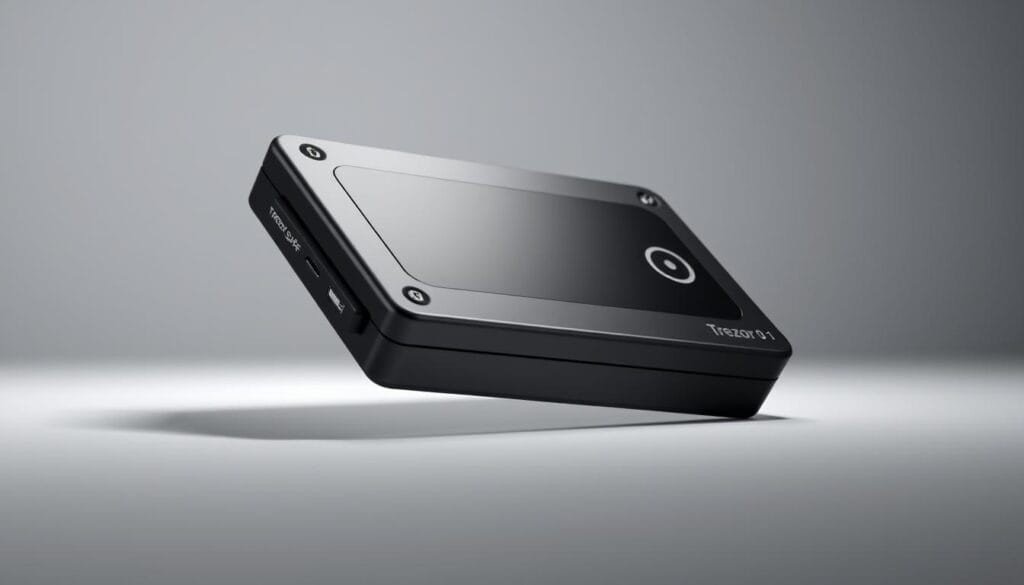
The Trezor Safe 3 sets a new standard for open-source hardware wallets, combining transparency with advanced security features. Designed for users who prioritize control and safety, this device supports over 9,000 assets, making it a versatile choice for managing diverse crypto assets.
Pros
One of the standout features of the Trezor Safe 3 is its fully open-source code, which allows for community audits. This transparency ensures that vulnerabilities can be identified and addressed quickly, building trust among users.
The device also supports Shamir Backup, a multi-share recovery system that enhances security. This feature ensures that even if one backup is compromised, the user’s assets remain protected. Additionally, the Bitcoin-only firmware option caters to users who focus exclusively on Bitcoin, streamlining the experience.
Cons
While the Trezor Safe 3 excels in many areas, its reliance on a touchscreen interface may require a learning curve for some users. The device’s advanced features, though beneficial, could be overwhelming for beginners.
Another limitation is the lack of support for certain niche cryptocurrencies. Users with highly diversified portfolios may need to consider additional storage solutions.
Key Features
The Trezor Safe 3 incorporates a Secure Element Certified Chip EAL6+, ensuring top-tier security. Its intuitive interface and touch-sensitive buttons make navigation straightforward, even for less tech-savvy users.
For those concerned about network privacy, the device offers Tor integration. This feature ensures that transactions remain confidential, adding an extra layer of protection. The SD card protection and password manager functionalities further enhance the wallet’s usability.
Explore more about open-source hardware wallets to understand how they can safeguard your digital investments.
KeepKey: Best Cold Wallet for Beginners

KeepKey offers a straightforward solution for those new to managing digital assets securely. With its hardware wallet design, it provides an accessible entry point into cold storage, ensuring robust protection for crypto assets.
Pros
One of KeepKey’s standout features is its large, easy-to-read screen, which enhances user experience during transactions. The device also supports QR code displays, simplifying the process of verifying and executing payments.
Integration with ShapeShift allows seamless token swaps directly within the wallet. This feature, combined with its $79 price point, makes KeepKey an affordable and versatile choice for beginners.
Cons
While KeepKey excels in simplicity, its firmware validation process may require additional steps compared to other devices. This could pose a slight learning curve for first-time users.
Another limitation is its multi-currency management, which, while functional, may not support all niche cryptocurrencies. Users with highly diversified portfolios should consider this before purchase.
Key Features
KeepKey incorporates advanced security features, including PIN entry mechanisms and recovery phrase processes. These ensure that only authorized individuals can access the wallet.
Physical durability testing and supply chain audits further enhance its reliability. For beginners, the wallet also includes educational resources to help users navigate the complexities of digital asset management.
SafePal: Best Hybrid Crypto Wallet
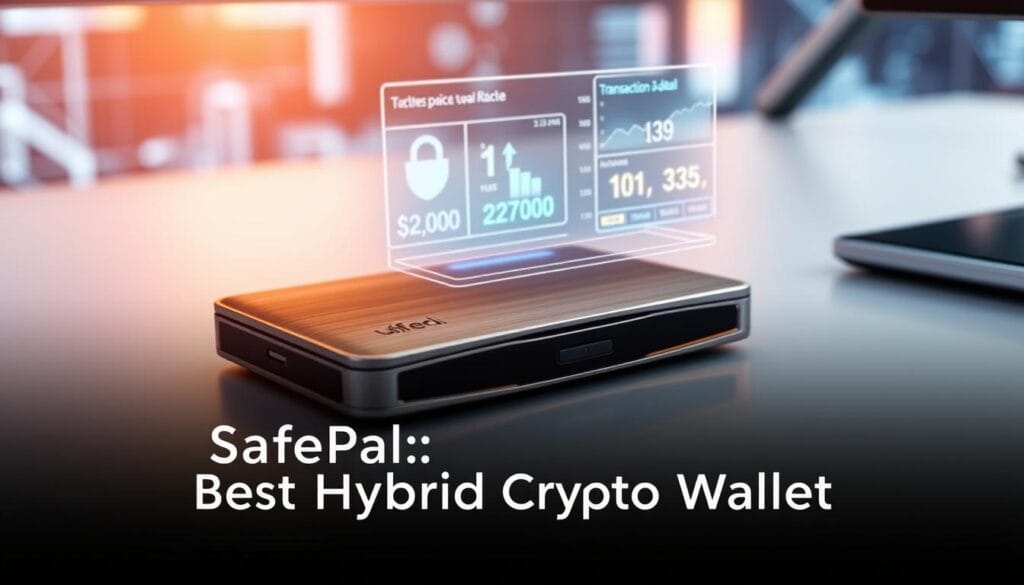
SafePal combines the convenience of mobile accessibility with the robust protection of hardware solutions, offering a hybrid approach to managing digital assets. Its unique architecture bridges the gap between mobile and hardware wallets, ensuring flexibility without compromising security.
One of SafePal’s standout features is its air-gapped QR code transactions. This method ensures that sensitive data never touches the internet, significantly reducing the risk of cyberattacks. Additionally, its integration with the Binance ecosystem provides seamless access to a wide range of crypto assets.
Pros
SafePal’s hybrid architecture offers a balanced security model, combining the accessibility of mobile apps with the offline protection of hardware wallets. Its mobile app has received multiple security certifications, ensuring compliance with industry standards.
The wallet also supports cross-chain swaps, enabling users to manage diverse portfolios effortlessly. NFT management features and price alert customization further enhance its usability, making it a versatile choice for both beginners and advanced users.
Cons
While SafePal excels in many areas, its DApp browser has faced criticism for potential vulnerabilities. Users must remain cautious when interacting with decentralized applications to mitigate risks.
Another limitation is its reliance on firmware updates for optimal performance. Although these updates enhance functionality, they may require additional setup and understanding.
Key Features
SafePal incorporates advanced tools like multi-signature configurations and disaster recovery planning. These features ensure that users can safeguard their assets even in challenging scenarios.
The wallet’s BNB chain optimization provides faster and cheaper transactions for users within the Binance ecosystem. Its firmware update mechanisms ensure continuous improvement, keeping the wallet aligned with the latest blockchain developments.
Cypherock: Best Hardware Wallet for Non-custodial Inheritance
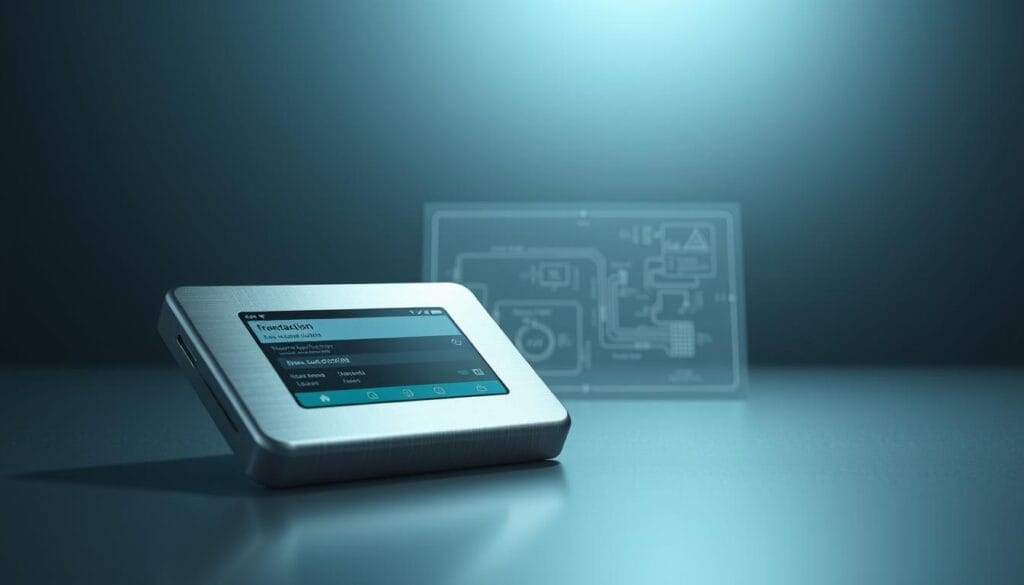
Cypherock redefines asset protection with its innovative approach to non-custodial inheritance. Designed for users who prioritize long-term security, this hardware wallet ensures that crypto assets remain safeguarded across generations. Its unique architecture integrates advanced security features, making it a standout choice for estate planning.
Pros
Cypherock leverages Shamir’s secret sharing to distribute private keys securely, ensuring no single point of failure. This method enhances protection against unauthorized access while maintaining user control.
The wallet’s X1 vault system offers decentralized key storage, reducing risks associated with centralized solutions. Additionally, its estate recovery workflows simplify inheritance planning, making it accessible for users of all experience levels.
Cons
While Cypherock excels in security, its advanced features may require a learning curve for beginners. The setup process, though thorough, could be time-consuming for those unfamiliar with blockchain technology.
Another limitation is its reliance on multi-jurisdiction legal compliance, which may complicate inheritance planning for users with assets in diverse regions.
Key Features
Cypherock’s time-locked access controls ensure that assets are only accessible under predefined conditions. This feature is particularly useful for estate planning, as it prevents premature access.
The wallet also integrates biometric inheritance triggers, adding an extra layer of security. Audit trail documentation and conflict resolution protocols further enhance its reliability, making it a comprehensive solution for long-term asset management.
For those exploring DeFi investment opportunities, Cypherock provides a secure foundation for managing digital assets across generations.
Tangem: Easy to Carry Around
Tangem redefines portability in the world of digital asset management with its innovative design. Its bank card form factor makes it one of the most convenient hardware wallets available, combining advanced security features with ease of use. With over 2M cards issued, Tangem has established itself as a trusted solution for crypto enthusiasts.
Pros
Tangem’s NFC-enabled cards ensure secure transactions without the need for physical connections. This feature, combined with its passive design, enhances durability and reduces wear over time. The multi-card redundancy setup allows users to create backups, ensuring access to their assets even if one card is lost.
Travel-friendly and resistant to environmental factors, Tangem is ideal for users on the go. Its merchant payment integrations further expand its usability, making it a versatile choice for everyday crypto management.
Cons
While Tangem excels in portability, its reliance on NFC technology may pose compatibility issues with older devices. Additionally, the setup process for multi-card redundancy requires careful attention to detail, which could be challenging for beginners.
Key Features
Tangem’s EAL6+ certification ensures top-tier security, meeting stringent industry standards. The wallet’s firmware update procedures are streamlined, ensuring users always have the latest protections. For enterprise users, bulk ordering options are available, making it a scalable solution.
Lost card replacement policies provide peace of mind, while travel security considerations ensure assets remain protected across borders. For more insights into Tangem’s capabilities, explore the Tangem Wallet blog.
Ellipal: Top Cold Storage Solution
Ellipal stands out as a premier choice for those seeking advanced cold storage solutions for their digital assets. Its air-gapped design ensures that sensitive data never touches the internet, significantly reducing the risk of cyberattacks. With a 4″ touchscreen interface, users can easily navigate and manage their crypto assets securely.
Pros
Ellipal’s self-destruct mechanism adds an extra layer of protection, ensuring that the device becomes unusable if tampered with. Its solar charging capabilities make it ideal for users in remote locations, while firmware verification processes ensure that only authentic software is installed. The wallet also supports MetaMask compatibility, allowing seamless integration with decentralized applications.
Cons
While Ellipal excels in security, its reliance on air-gapped technology may limit its functionality for users who require frequent online transactions. Additionally, the setup process for multi-account management can be complex for beginners.
Key Features
Ellipal incorporates advanced security features, including anti-tamper mesh and disaster recovery protocols. Its DApp connection workflows simplify interactions with decentralized applications, while travel rule compliance ensures adherence to regulatory standards. Supply chain integrity checks and enterprise-grade security further enhance its reliability, making it a comprehensive solution for safeguarding blockchain assets.
Conclusion: Choosing the Right DeFi Wallet for Your Needs
Selecting the ideal solution for managing digital assets requires careful consideration of your unique needs and risk tolerance. A comprehensive risk profile assessment is essential to identify potential vulnerabilities and implement safeguards like multi-signature support and biometric authentication.
Effective asset allocation strategies involve diversifying storage across hot and cold solutions. This approach balances accessibility with enhanced protection against cyber threats. Additionally, staying informed about emerging technologies ensures you can adopt innovations like MPC cryptography to future-proof your investments.
Regulatory compliance and insurance coverage are critical factors to evaluate. Ensuring your chosen solution adheres to industry standards provides peace of mind. For a deeper understanding of these considerations, explore this guide on choosing the right DeFi wallet.
Finally, prioritize solutions with strong community support and regular upgrade cycles. These factors contribute to long-term viability and reliability in safeguarding your crypto assets.

